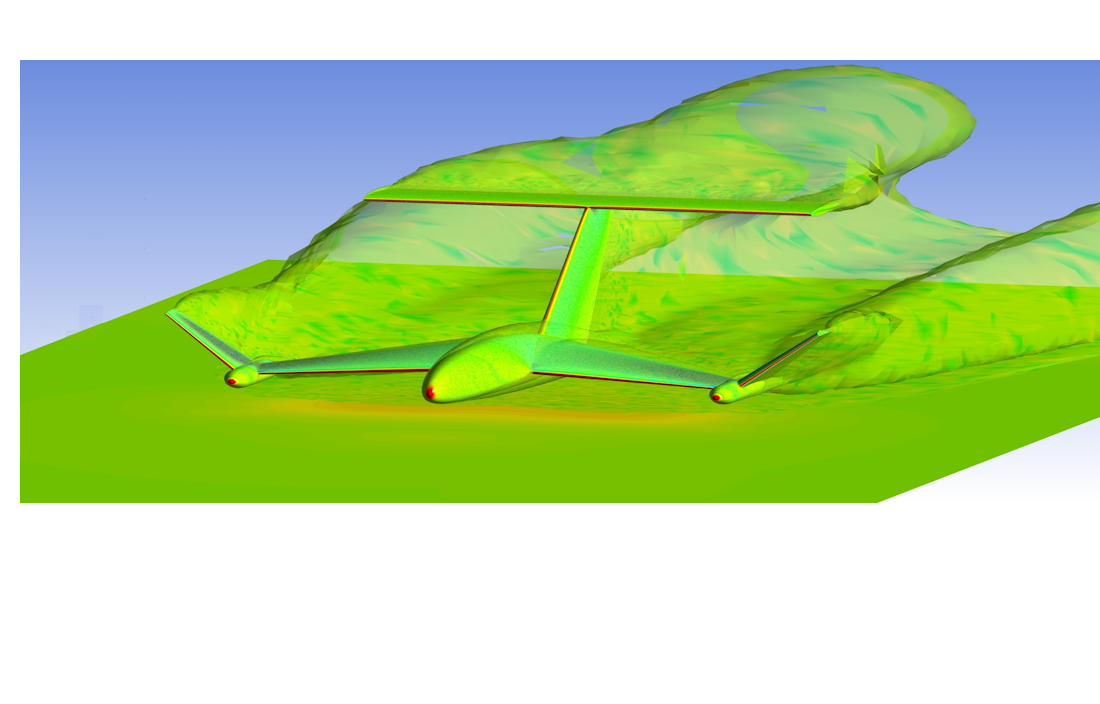Визначення аеродинамічних характеристик високошвидкісного безпілотного морського WIG-корабля
DOI:
https://doi.org/10.15587/1729-4061.2024.309708Ключові слова:
аеродинаміка транспортних засобів, малорозмірний WIG – апарат, CFD моделювання, безпілотні системи, екранний ефектАнотація
Об’єктом дослідження даної роботи є аеродинамічні процеси під час руху безпілотного літального апарату, що рухається низько над підстилаючою поверхнею. Відомо, що ефект присутності поверхні, або екранний ефект, дозволяє підвищити аеродинамічну якість літального апарату, що низько летить. Проте даний ефект найвідчутніше проявляється для суден великих розмірів. Безпілотні апарати зазвичай характеризуються відносно невеликою геометрією. В представленій роботі досліджено аеродинамічні процеси під час польоту малорозмірного апарату з динамічним принципом підтримки над поверхнею. Розглянуто конкретний прототип такого безпілотного апарату, що був запропонований авторами. Метою роботи є оцінка аеродинамічних сил, що впливають на малорозмірний безпілотний високошвидкісний апарат, що використовує динамічний принцип підтримки над поверхнею (WIG-корабель), за допомогою CFD моделювання. На відмінну від більшості відомих досліджень екранного ефекту, в даній роботі використовувалась 3D постановка задачі. На основі обчислювальних експериментів виконано візуалізацію фізичних полів навколо літального апарату під час руху над екраном. Визначено вплив відстані від поверхні на аеродинамічні характеристики силу малорозмірного літального апарату та висоту ефективної зони впливу екранного ефекту на малорозмірний WIG-корабель, що розглядається, в межах 0.3£ £0.7. Показано, що наближення до поверхні призводить до зміщення центру тяжіння апарату, що призводить до зміни аеродинамічного моменту. Дане явище має бути враховано під час розробки системи керування, для забезпечення стійкого полоту. Результати дослідження мають безпосередній інтерес з точки зору створення безпілотних апаратів нового типу, що використовують динамічний принцип підтримки над поверхнею
Посилання
- Ukraine war will shift Black Sea naval balance (2023). Emerald Expert Briefings. https://doi.org/10.1108/oxan-db282906
- Yun, L., Bliault, A. (2012). Wings in Ground Effect: Ekranoplans and WIG Craft. High Performance Marine Vessels, 89–132. https://doi.org/10.1007/978-1-4614-0869-7_3
- Papadopoulos, C., Mitridis, D., Yakinthos, K. (2021). Conceptual design of a novel Unmanned Ground Effect Vehicle. IOP Conference Series: Materials Science and Engineering, 1024 (1), 012058. https://doi.org/10.1088/1757-899x/1024/1/012058
- Rozhdestvensky, K. V. (2006). Wing-in-ground effect vehicles. Progress in Aerospace Sciences, 42 (3), 211–283. https://doi.org/10.1016/j.paerosci.2006.10.001
- Lowther, A., Siddiki, M. K. (2022). Combat Drones in Ukraine. Air & Space Operations Review, 1 (4), 3–13.
- Joiner, K. F., Swidan, A. A. (2023). Conceptualising a Hybrid Flying and Diving Craft. Journal of Marine Science and Engineering, 11 (8), 1541. https://doi.org/10.3390/jmse11081541
- Sokhatskyi, A., Dreus, A., Radovskyi, M., Horbonos, S. (2024). A review of the problem of modeling the aerodynamics of small-sized ekranoplanes. MATEC Web of Conferences, 390, 04011. https://doi.org/10.1051/matecconf/202439004011
- Nandkumar, B., Raksheet, C., Subodh, P., Yash, M., Shruti, K. (2021). Design and Analysis of Wing in Ground Effect Vehicle. Advances in Aerospace Science and Applications, 11 (1), 11–31. Available at: https://www.ripublication.com/aasa/aasav11n1_02.pdf
- Abramowski, T. (2007). Numerical Investigation of Airfoil in Ground Proximity. Journal of Theoretical and Applied Mechanics, 45 (2), 425–436. Available at: https://www.researchgate.net/publication/228651914_Numerical_investigation_of_airfoil_in_ground_proximity
- Phillips, W. F., Hunsaker, D. F. (2013). Lifting-Line Predictions for Induced Drag and Lift in Ground Effect. Journal of Aircraft, 50 (4), 1226–1233. https://doi.org/10.2514/1.c032152
- Prykhodko, A. A., Alekseyenko, S. V., Prikhodko, V. V. (2019). Numerical investigation of the influence of horn ice formation on airfoils aerodynamic performances. International Journal of Fluid Mechanics Research, 46 (6), 499–508. https://doi.org/10.1615/interjfluidmechres.2019026024
- Tahani, M., Masdari, M., Bargestan, A. (2017). Aerodynamic performance improvement of WIG aircraft. Aircraft Engineering and Aerospace Technology, 89 (1), 120–132. https://doi.org/10.1108/aeat-05-2015-0139
- Thianwiboon, M. (2023). A Numerical Comparative Study of the Selected Cambered and Reflexed Airfoils in Ground Effect. Engineering Journal, 27 (11), 39–51. https://doi.org/10.4186/ej.2023.27.11.39
- Tumse, S., Tasci, M. O., Karasu, I., Sahin, B. (2021). Effect of ground on flow characteristics and aerodynamic performance of a non-slender delta wing. Aerospace Science and Technology, 110, 106475. https://doi.org/10.1016/j.ast.2020.106475
- Menter, F. (1993). Zonal Two Equation k-w Turbulence Models For Aerodynamic Flows. 23rd Fluid Dynamics, Plasmadynamics, and Lasers Conference. https://doi.org/10.2514/6.1993-2906
- Prikhod’ko, A. A., Alekseenko, S. V. (2014). Numerical Simulation of the Processes of Icing on Airfoils with Formation of a “Barrier” Ice. Journal of Engineering Physics and Thermophysics, 87 (3), 598–607. https://doi.org/10.1007/s10891-014-1050-0
- Ozdemir, Y. H., Çoşgun, T. (2022). The Influence of Turbulence Models on the Numerical Modelling of a 3D Wing in Ground Effect. European Journal of Science and Technology. https://doi.org/10.31590/ejosat.1200056
- Alekseyenko, S., Dreus, A., Dron, M., Brazaluk, O. (2022). Numerical Study of Aerodynamic Characteristics of a Pointed Plate of Variable Elongation in Subsonic and Supersonic Gas Flow. Journal of Advanced Research in Fluid Mechanics and Thermal Sciences, 96 (2), 88–97. https://doi.org/10.37934/arfmts.96.2.8897

##submission.downloads##
Опубліковано
Як цитувати
Номер
Розділ
Ліцензія
Авторське право (c) 2024 Andrii Dreus, Serhii Aleksieienko, Valerii Nekrasov

Ця робота ліцензується відповідно до Creative Commons Attribution 4.0 International License.
Закріплення та умови передачі авторських прав (ідентифікація авторства) здійснюється у Ліцензійному договорі. Зокрема, автори залишають за собою право на авторство свого рукопису та передають журналу право першої публікації цієї роботи на умовах ліцензії Creative Commons CC BY. При цьому вони мають право укладати самостійно додаткові угоди, що стосуються неексклюзивного поширення роботи у тому вигляді, в якому вона була опублікована цим журналом, але за умови збереження посилання на першу публікацію статті в цьому журналі.
Ліцензійний договір – це документ, в якому автор гарантує, що володіє усіма авторськими правами на твір (рукопис, статтю, тощо).
Автори, підписуючи Ліцензійний договір з ПП «ТЕХНОЛОГІЧНИЙ ЦЕНТР», мають усі права на подальше використання свого твору за умови посилання на наше видання, в якому твір опублікований. Відповідно до умов Ліцензійного договору, Видавець ПП «ТЕХНОЛОГІЧНИЙ ЦЕНТР» не забирає ваші авторські права та отримує від авторів дозвіл на використання та розповсюдження публікації через світові наукові ресурси (власні електронні ресурси, наукометричні бази даних, репозитарії, бібліотеки тощо).
За відсутності підписаного Ліцензійного договору або за відсутністю вказаних в цьому договорі ідентифікаторів, що дають змогу ідентифікувати особу автора, редакція не має права працювати з рукописом.
Важливо пам’ятати, що існує і інший тип угоди між авторами та видавцями – коли авторські права передаються від авторів до видавця. В такому разі автори втрачають права власності на свій твір та не можуть його використовувати в будь-який спосіб.










